I was watching this lecture on Kate antiquity. This guy (richard bullet) apprently wrote the defining book on camels and caravans. Around minite 35:00 he talks about how their is no indigenous somali camel caravans and the type of saddles we use can't really carry large goods and don't resemble those used in caravans in the middle east/sahel/north africa. It made me wonder why we never really developed this method . It doesn't make sense since we're right across the middle east there has to be some practical reason we never adopted this saddle technology.
You are using an out of date browser. It may not display this or other websites correctly.
You should upgrade or use an alternative browser.
You should upgrade or use an alternative browser.
Somali carvans did they exist?
- Thread starter Midas
- Start date
Pure ignorance from that professor, here you have 19th century Somali camel caravans approaching Barawa and departing from Mogadishu, and both with heavy loads;


Northern Swordsman
Tawxiid Alle lahaw, Talo na Alle saaro.
We were merchants and our main transportation was the camel. How do you get merchandise from Harar to Berbera or from Baidoa to Barawa?
Camels.
Even the average Reer Guuraa used caravans to transport their belongings.
Camels.
Even the average Reer Guuraa used caravans to transport their belongings.
What the f*ck is that one digit IQ fool talking about?! Walaal, read any book about Somalis in the 19th and early 20th centuries. Caravans, led by camels, are mentioned everywhere. For f*ck's sake, we've had members on here who have grandparents who plainly remember the old caravans or worked them. The hell kinda scholars are you listening to? 
In Richard Burton's writings from the mid 19th century, for example, he uses the word "caravan" nearly one hundred times and each time in reference to either a Somali or Afar caravan:
In Richard Burton's writings from the mid 19th century, for example, he uses the word "caravan" nearly one hundred times and each time in reference to either a Somali or Afar caravan:
Step a side
VIP
The Murusade from Baraawe and Merca were heavily involved in the caravan trade.

Calm down guys I don't agree with him obviously. But I do think he makes an intresting point when he notes the difference between somali saddles deisgn and the other parts of africa which desecend from the Arabian ones. Sometimes you have to read or watch something that is 90% bullshit to find any real info. The solution for people making claims like this is we need to publish academic research on somalia. It's one of my main gripes with somali studies it's all how state buidling and social problems nothing about oral traditions or history or archeology.
The Murusade from Baraawe and Merca were heavily involved in the caravan trade.
View attachment 324881
Caravans were literally the LIFEBLOOD of Somali and generally Eastern Horn towns. Harar itself was purely dependent on the caravan trade between itself and coastal towns like Berbera and Saylac:
Three caravans leave Harar every year for the Berberah market. The first starts early in January, laden with coffee, Tobes, Wars, ghee, gums, and other articles to be bartered for cottons, silks, shawls, and Surat tobacco. The second sets out in February. The principal caravan, conveying slaves, mules, and other valuable articles, enters Berberah a few days before the close of the season: it numbers about 3000 souls, and is commanded by one of the Amir’s principal officers, who enjoys the title of Ebi or leader. Any or all of these kafilahs might be stopped by spending four or five hundred dollars amongst the Jibril Abokr tribe, or even by a sloop of war at the emporium. “He who commands at Berberah, holds the beard of Harar in his hand,” is a saying which I heard even within the city walls. - First Footsteps in East Africa
A similar situation existed in Koonfur where groups like the Geledi and the earlier Ajuuraan were able to exert political hegemony over the Banaadir towns by basically controlling the goods like grains flowing in from the interior into these towns to be either given to Indian or Arab traders or exported by Somalis themselves. As your own source shows, these vast quantities of goods were obviously moved by camel caravans.
I mean ya illahi, one second of googling stuff like "old Somali caravan" turns up images like this on top of the ones you've already shared:
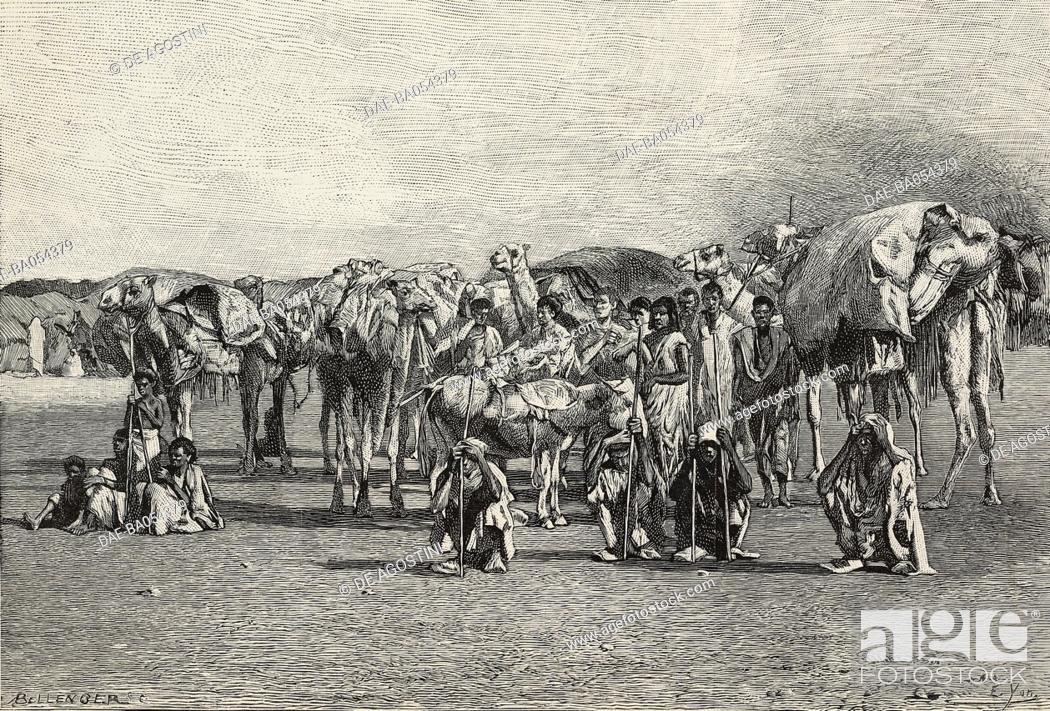
A Somali caravan arriving at the market, indigenous people with camels and donkeys, Berbera, Somalia
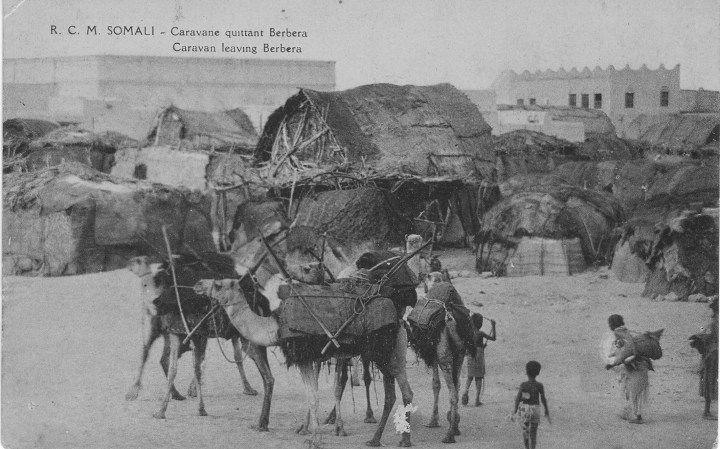
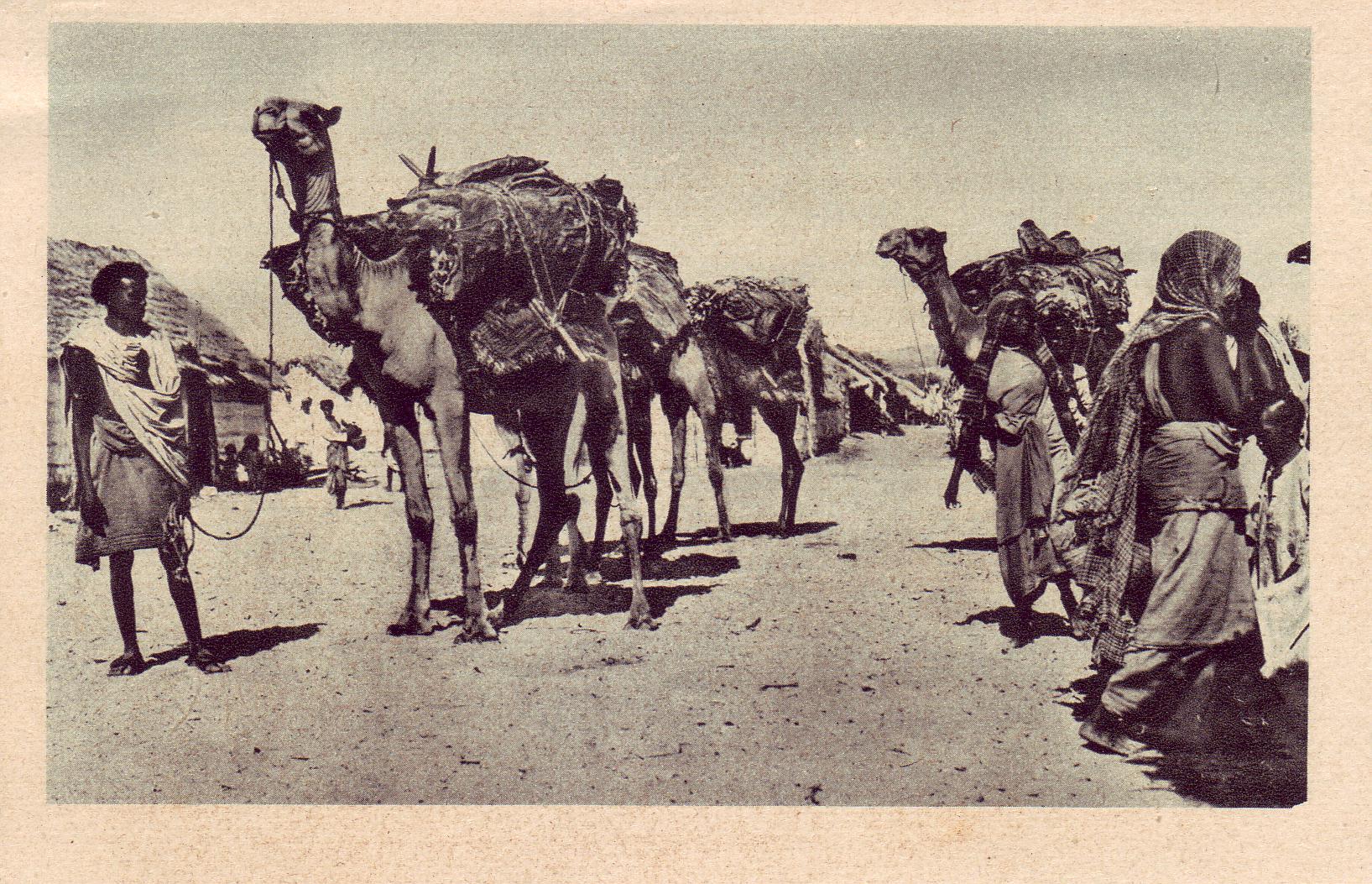
Somali nomad with his caravan of camels. Early 1900s.
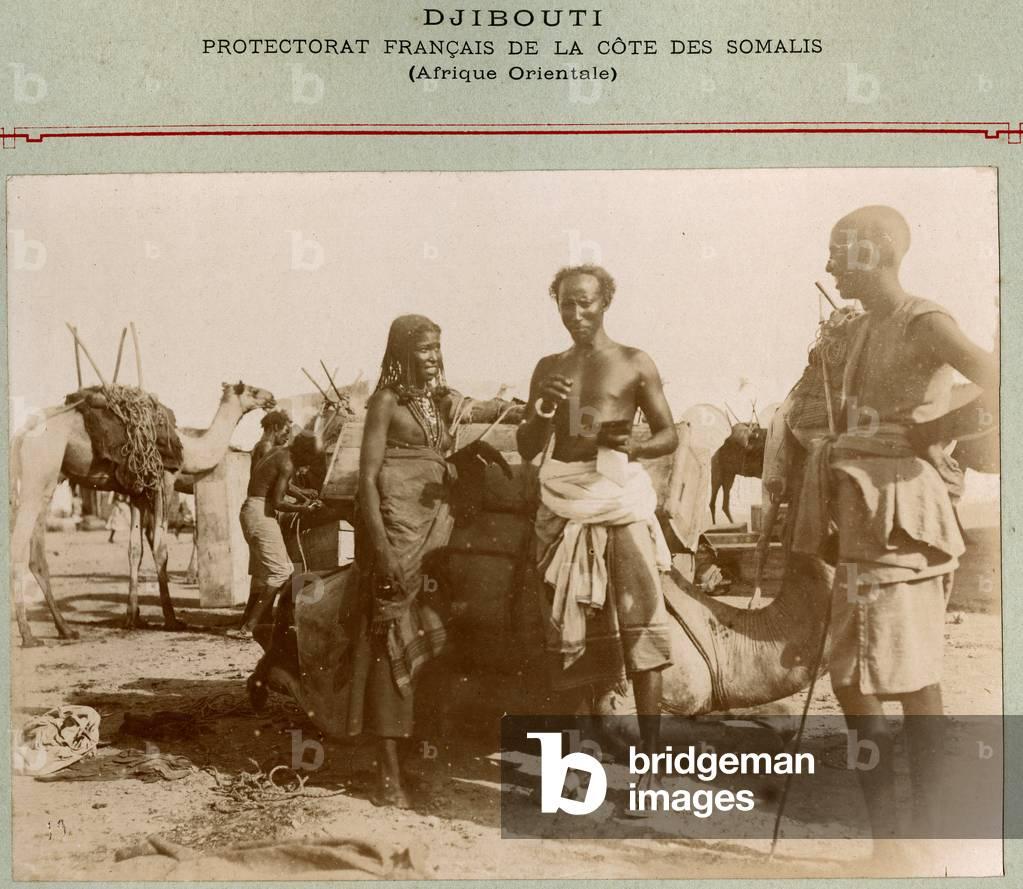
Africa (Somalis Coast), Djibouti: Preparation of a camel caravan, 1880 (think these are Afars, tho)
It's funny too because, historically, Somalis and Afars did not even ride our camels. We held them in particularly high and sacred esteem so only children, pregnant women, the elderly or the sickly were allowed to ride them:
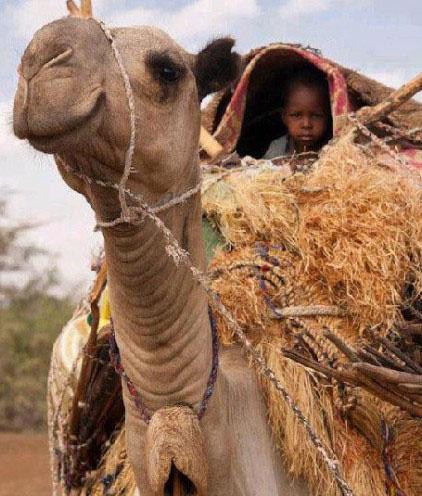
Healthy adults and adolescents walked beside them or rode horses if they rode anything. They were used strictly for their milk, at times for meat and, of course, as pack animals for carrying a nomadic family's belongings and trade goods.
Last edited:
^The Spanish archaeological team also found a Caravan station dating back to the Adal period in the North*. If future researchers retraced the original caravan routes, they would no doubt find more of these caravanserais;
* The Caravan Station of Qalcadda
* The Caravan Station of Qalcadda
Calm down guys I don't agree with him obviously. But I do think he makes an intresting point when he notes the difference between somali saddles deisgn and the other parts of africa which desecend from the Arabian ones. Sometimes you have to read or watch something that is 90% bullshit to find any real info. The solution for people making claims like this is we need to publish academic research on somalia. It's one of my main gripes with somali studies it's all how state buidling and social problems nothing about oral traditions or history or archeology.
The Arabian saddle probably never caught on because of what I stated earlier. Somalis and Afars traditionally saw camels as too sacred to ride if you're not a child, a pregnant woman or sickly and elderly person. For those people they made special cots like the one for the child. Somali nomadic material culture is still pretty damn authentically "Cushitic" and is near identical in many ways to what was historically practiced by Afars, Bejas and South-Cushites, the latter of which were still cattle-herders. The domed mat-tents are a prime example. Cushitic reer miyi largely preserved their material culture despite so many overall cultural influences from Arabia, including the introduction of the camel itself by the looks of it.
Bejas did historically ride theirs, though. Most "Somali riding camel" pics on the internet are actually images of Bejas:
Riftvalley
VIP
The camel caravans went so deep into the interior, donkeys took over the last leg to transport the products into Habashistan terrain.
Our caravans reaching TimbaktuThe camel caravans went so deep into the interior, donkeys took over the last leg to transport the products into Habashistan terrain.
Emir of Zayla
𝕹𝖆𝖙𝖎𝖔𝖓 𝖔𝖋 𝕻𝖔𝖊𝖙𝖘
Yeah that’s complete and utter bullshit.I was watching this lecture on Kate antiquity. This guy (richard bullet) apprently wrote the defining book on camels and caravans. Around minite 35:00 he talks about how their is no indigenous somali camel caravans and the type of saddles we use can't really carry large goods and don't resemble those used in caravans in the middle east/sahel/north africa. It made me wonder why we never really developed this method . It doesn't make sense since we're right across the middle east there has to be some practical reason we never adopted this saddle technology.
Map of medieval caravan routes connecting to coastal markets in Somaliweyn
www.somalispot.com
Riftvalley
VIP
Yeah thanks that super interesting. I’ve always wondered how far Somali traders extended into Sudan area and possibly the Sahel/Sahara. I wonder if any Sheikhs ventured into the Timbuktu areas? Perhaps the Malik madhab or the closeness of Arabia meant they didn’t venture there. I know there was a Libyan guy with a Somali haplogroup Libya floating around on the DNA pages.Our caravans reaching Timbaktu
View attachment 324887
Yami
Trudeau Must Go #CCP2025
There were even Somali communities as far out as Morroco in the late early 1900s. There had to have been farax’s chilling in the Sahel at some point.Yeah thanks that super interesting. I’ve always wondered how far Somali traders extended into Sudan area and possibly the Sahel/Sahara. I wonder if any Sheikhs ventured into the Timbuktu areas? Perhaps the Malik madhab or the closeness of Arabia meant they didn’t venture there. I know there was a Libyan guy with a Somali haplogroup Libya floating around on the DNA pages.
mosquée somalie ورزازات photos https://g.co/kgs/WqsgWvT
Idilinaa
VIP
What we know from the latest medieval archeological research. The Somali Caravan transportation system was highly advanced and developed.
State leaders built many Caravan stations all over the interior of the country called ''Qalcaddaa'' to direct and control trade.
The Archaeology of the medieval trade networks in Western Somaliland
They were built in similar style pattern to the ones in the Middle east/Arabia as well. This robust caravan system was responsible for making Somalis extremely wealthy in what researchers describe as one the most successful trading networks in the world.
Like other posters @Shimbiris have explained transportation of trade goods via camel caravans were ubiquitous in nature across the whole peninsula. Much like seafaring was for Somalis .
I watched the lecture. He doesn't seem to mention Somalis in the whole lecture, except 1 time in the mere passing mentioning the nomadic zone after talking about camels used for farming.. Does not mention anything about Somalis being technologically different from Middle East or not having camel caravans or the saddle not being able to carry large goods.
@40:00 He does talks about the difference between the camel transportation in southern sahara vs the northern sahara. He says that in the southern sahara they adopted the Arabian camel saddle which was designed for military reasons and instead they utilize it strictly for personal transport and don't use it for caravans or commerce. Other than that he mentions the spread of camel, camels used for agricultural (plow technology) in certain places and camel armies etc.
Also the type of Saddles Somalis utilized might just vary depending on use of animals, context or functionality much like anything else. Some could have been influenced by the decline of commerce that happened between 1600s-1800s following the collapse as well. There hasn't been much research on.
The main difference i would say is that Somalis did not use the camel for military purposes, they used it for personal transport, and for trade/commerce. Horses were breed and used for military riding. Somalis were prime regional horse breeders and they did not need to use camels for warfare. They used cattle for farming as well.
State leaders built many Caravan stations all over the interior of the country called ''Qalcaddaa'' to direct and control trade.
The Archaeology of the medieval trade networks in Western Somaliland
This network allowed and boosted the emergence of powerful state structures in the region, visible in the building of caravan stations and fortresses and the development of urban centres along the trade routes.
These Qalcadda, a caravanserai or caravan station. Qalcadda is exceptional for many reasons. It is the only caravanserai a plan and design similar to those from the Middle East having found so far in Subsaharan Africa, but it is also a clear example of the close cultural and economic relationships between Somaliland, Arabia and the Middle East during the Middle Ages.
They were built in similar style pattern to the ones in the Middle east/Arabia as well. This robust caravan system was responsible for making Somalis extremely wealthy in what researchers describe as one the most successful trading networks in the world.
Like other posters @Shimbiris have explained transportation of trade goods via camel caravans were ubiquitous in nature across the whole peninsula. Much like seafaring was for Somalis .
I watched the lecture. He doesn't seem to mention Somalis in the whole lecture, except 1 time in the mere passing mentioning the nomadic zone after talking about camels used for farming.. Does not mention anything about Somalis being technologically different from Middle East or not having camel caravans or the saddle not being able to carry large goods.
@40:00 He does talks about the difference between the camel transportation in southern sahara vs the northern sahara. He says that in the southern sahara they adopted the Arabian camel saddle which was designed for military reasons and instead they utilize it strictly for personal transport and don't use it for caravans or commerce. Other than that he mentions the spread of camel, camels used for agricultural (plow technology) in certain places and camel armies etc.
Also the type of Saddles Somalis utilized might just vary depending on use of animals, context or functionality much like anything else. Some could have been influenced by the decline of commerce that happened between 1600s-1800s following the collapse as well. There hasn't been much research on.
The main difference i would say is that Somalis did not use the camel for military purposes, they used it for personal transport, and for trade/commerce. Horses were breed and used for military riding. Somalis were prime regional horse breeders and they did not need to use camels for warfare. They used cattle for farming as well.
Last edited:
Riftvalley
VIP
Around 34 minutes he says “Somalia, Northern Kenya, Eritrea, doesn’t really fit into the camel caravan pattern”. He thinks this is because of the saddle issue he mentioned prior to that. Sounds like a dismissive Eurocentric this Individual.What we know from the latest medieval archeological research. The Somali Caravan transportation system was highly advanced and developed.
State leaders built many Caravan stations all over the interior of the country called ''Qalcaddaa'' to direct and control trade.
The Archaeology of the medieval trade networks in Western Somaliland
They were built in similar style pattern to the ones in the Middle east/Arabia as well. This robust caravan system was responsible for making Somalis extremely wealthy in what researchers describe as one the most successful trading networks in the world.
Like other posters @Shimbiris have explained transportation of trade goods via camel caravans were ubiquitous in nature across the whole peninsula. Much like seafaring was for Somalis .
I watched the lecture. He doesn't seem to mention Somalis in the whole lecture, except 1 time in the mere passing mentioning the nomadic zone after talking about camels used for farming.. Does not mention anything about Somalis being technologically different from Middle East or not having camel caravans or the saddle not being able to carry large goods.
@40:00 He does talks about the difference between the camel transportation in southern sahara vs the northern sahara. He says that in the southern sahara they adopted the Arabian camel saddle which was designed for military reasons and instead they utilize it strictly for personal transport and don't use it for caravans or commerce. Other than that he mentions the spread of camel, camels used for agricultural (plow technology) in certain places and camel armies etc.
Also the type of Saddles Somalis utilized might just vary depending on use of animals, context or functionality much like anything else. Some could have been influenced by the decline of commerce that happened between 1600s-1800s following the collapse as well. There hasn't been much research on.
The main difference i would say is that Somalis did not use the camel for military purposes, they used it for personal transport, and for trade/commerce. Horses were breed and used for military riding. Somalis were prime regional horse breeders and they did not need to use camels for warfare. They used cattle for farming as well.
Fascinating we really need to excavate these places wallahi .What we know from the latest medieval archeological research. The Somali Caravan transportation system was highly advanced and developed.
State leaders built many Caravan stations all over the interior of the country called ''Qalcaddaa'' to direct and control trade.
The Archaeology of the medieval trade networks in Western Somaliland
They were built in similar style pattern to the ones in the Middle east/Arabia as well. This robust caravan system was responsible for making Somalis extremely wealthy in what researchers describe as one the most successful trading networks in the world.
Like other posters @Shimbiris have explained transportation of trade goods via camel caravans were ubiquitous in nature across the whole peninsula. Much like seafaring was for Somalis .
I watched the lecture. He doesn't seem to mention Somalis in the whole lecture, except 1 time in the mere passing mentioning the nomadic zone after talking about camels used for farming.. Does not mention anything about Somalis being technologically different from Middle East or not having camel caravans or the saddle not being able to carry large goods.
@40:00 He does talks about the difference between the camel transportation in southern sahara vs the northern sahara. He says that in the southern sahara they adopted the Arabian camel saddle which was designed for military reasons and instead they utilize it strictly for personal transport and don't use it for caravans or commerce. Other than that he mentions the spread of camel, camels used for agricultural (plow technology) in certain places and camel armies etc.
Also the type of Saddles Somalis utilized might just vary depending on use of animals, context or functionality much like anything else. Some could have been influenced by the decline of commerce that happened between 1600s-1800s following the collapse as well. There hasn't been much research on.
The main difference i would say is that Somalis did not use the camel for military purposes, they used it for personal transport, and for trade/commerce. Horses were breed and used for military riding. Somalis were prime regional horse breeders and they did not need to use camels for warfare. They used cattle for farming as well.
Riftvalley
VIP
I have seen this floating around the internet. Are there accurate sources Somalis built the mosque. Maybe Somalis working for the French army?There were even Somali communities as far out as Morroco in the late early 1900s. There had to have been farax’s chilling in the Sahel at some point.
mosquée somalie ورزازات photos https://g.co/kgs/WqsgWvT
Idilinaa
VIP
Around 34 minutes he says “Somalia, Northern Kenya, Eritrea, doesn’t really fit into the camel caravan pattern”. He thinks this is because of the saddle issue he mentioned prior to that. Sounds like a dismissive Eurocentric this Individual.
I see it now , i watched it from 35 min mark so i missed it. He is just wrong. Somalis used camels for both personal transport and for long distance trade/commerce . He seems to believe Somalis only used camels for personal transport by pastoralists. Those separate usages did not go hand in hand. So he is lumping the two. Not only did the Horn of Africa fit the cravan pattern , it was crucial in many ways.
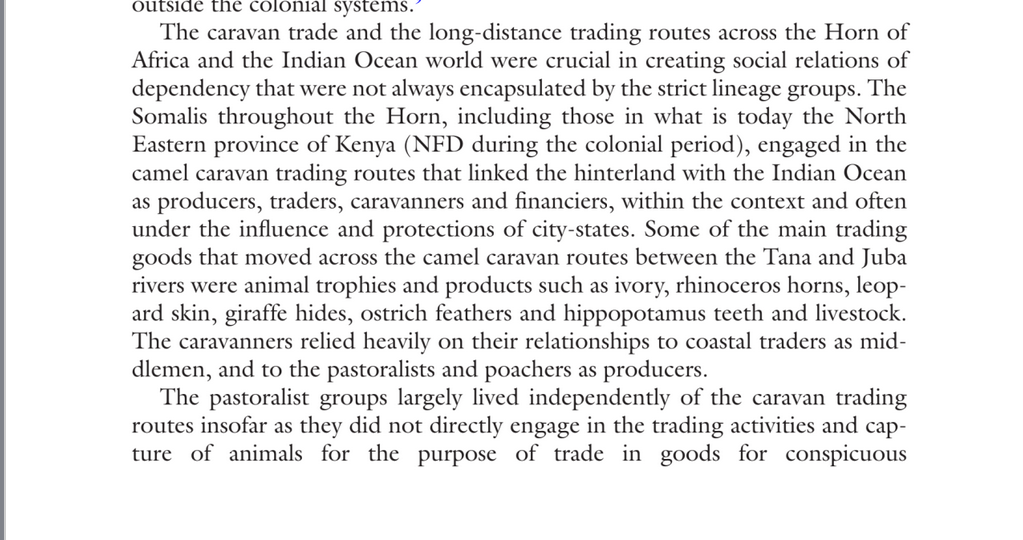
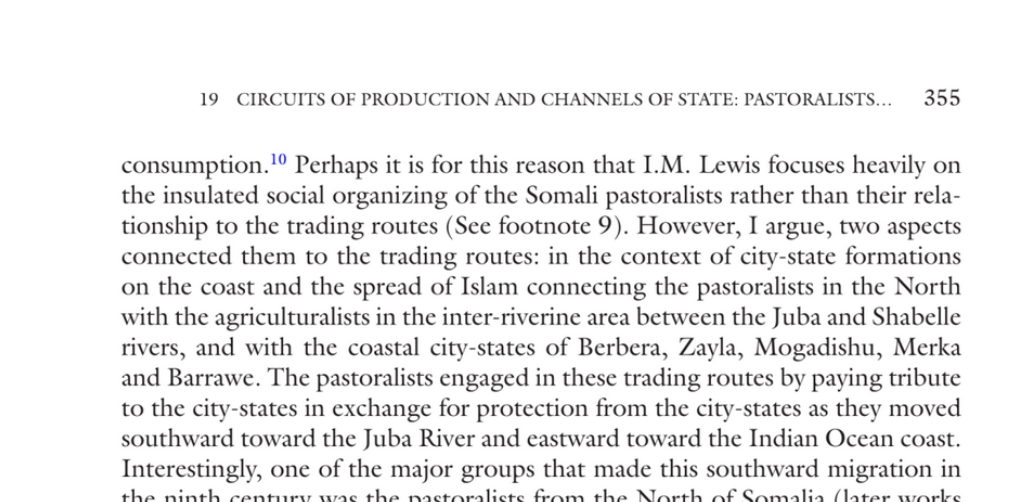
It doesn't have to be Eurocentric, more like reductive. Somalia and the horn is outside his study expertise it seems. It's a shame because studying the horn would reveal how deeply connected and involved it was in regional trade systems .
Last edited:
